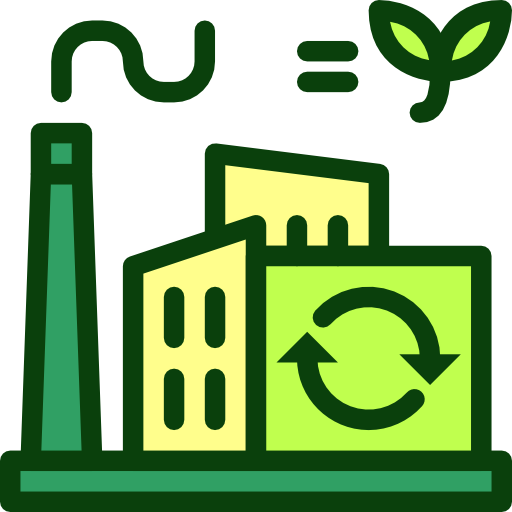Senegal - Geography

Here, let us take a look at the Geography of Senegal. Westernmost country on the African continent; The Gambia is almost an enclave within Senegal. Mother's mean age at first birth is 21.9 years (2019 est.) (Note: data represents median age at first birth among women 25-49), whereas, the Maternal mortality ratio is 237 deaths/100,000 live births (2023 est.)
Geographical data of Senegal
| Location | Western Africa, bordering the North Atlantic Ocean, between Guinea-Bissau and Mauritania |
|---|---|
| Geographic coordinates | 14 00 N, 14 00 W |
| Map references | Africa |
| Tarrain | generally low, rolling, plains rising to foothills in southeast |
| Natural Resources | fish, phosphates, iron ore |
| Natural Hazards | lowlands seasonally flooded; periodic droughts |
| Irrigated Land | 1,200 sq km (2012) |
| Major rivers (by length in km) | Senegal (shared with Guinea [s], Mali, and Mauritania [m] ) - 1,641 km; Gambie (Gambia) (shared with Guinea [s] and The Gambia [m]) - 1,094 km note: [s] after country name indicates river source; [m] after country name indicates river mouth |
| Major aquifers | Senegalo-Mauritanian Basin |
| Land Boundaries | 2,684 km |
| Border Countries | The Gambia 749 km; Guinea 363 km; Guinea-Bissau 341 km; Mali 489 km; Mauritania 742 km |
| Coastline | 531 km |
| Climate | tropical; hot, humid; rainy season (May to November) has strong southeast winds; dry season (December to April) dominated by hot, dry, harmattan wind |
| Area | |
| Total Area | |
| Land Area | 192,530 sq km |
| Water Area | 4,192 sq km |
| comparative Area | slightly smaller than South Dakota; slightly larger than twice the size of Indiana |
| Maritime Claims | |
| Territorial sea | 12 nm |
| Contiguous zone | 24 nm |
| Exclusive economic zone | 200 nm |
| Continental shelf | 200 nm or to the edge of the continental margin |
| Elevations | |
| Highest point | unnamed elevation 2.8 km southeast of Nepen Diaka 648 m |
| Lowest point | Atlantic Ocean 0 m |
| Mean elevation | 69 m |
| Land Use | |
| Agricultural land | 49.4% (2022 est.) |
| Agricultural land: arable land | arable land: 19.9% (2022 est.) |
| Agricultural land: permanent crops | permanent crops: 0.4% (2022 est.) |
| Agricultural land: permanent pasture | permanent pasture: 29.1% (2022 est.) |
| Forest | 41.5% (2022 est.) |
| Other | 9.1% (2022 est.) |
Population Distribution
The population is concentrated in the west, with Dakar anchoring a well-defined core area; approximately 70% of the population is rural, as shown in this population distribution map
People and Society
In Senegal, the different Ethnic groups are such that we have: Wolof 39.7%, Pulaar 27.5%, Sereer 16%, Mandinka 4.9%, Jola 4.2%, Soninke 2.4%, other 5.4% (includes Europeans and persons of Lebanese descent) (2019 est.)
| Population | |
|---|---|
| Pop growth rate | 2.46% (2024 est.) |
| Birth rate | 30.2 births/1,000 population (2024 est.) |
| Death rate | 4.9 deaths/1,000 population (2024 est.) |
| Health expenditure | |
| Physicians Density | |
| Hospital bed Density | 0.7 beds/1,000 population (2019 est.) |
| Total fertility rate | 4.06 children born/woman (2024 est.) |
| Gross reproduction rate | 1.98 (2024 est.) |
| Contraceptive prevalence rate | |
| Est married women (ages 15-49) | 65.3% (2023 est.) |
| Literacy | |
| Education expenditures | |
| Net Migration rate | -0.7 migrant(s)/1,000 population (2024 est.) |
| Nationality | Senegalese | Senegalese (singular and plural) |
| Languages | French (official), Wolof, Pulaar, Jola, Mandinka, Serer, Soninke |
| Religions | Muslim 97.2% (most adhere to one of the four main Sufi brotherhoods), Christian 2.7% (mostly Roman Catholic) (2019 est.) |
| Age Structure | |
| 0-14 years | 40.7% (male 3,907,986/female 3,760,594) |
| 15-64 years | 55.9% (male 5,098,038/female 5,437,195) |
| 65 years and over | 3.4% (2024 est.) (male 277,290/female 366,416) |
| Dependency Ratios | |
| Total dependency ratio | 78.9 (2024 est.) |
| Youth dependency ratio | 72.8 (2024 est.) |
| Elderly dependency ratio | 6.1 (2024 est.) |
| Potential support ratio | 16.4 (2024 est.) |
| Median Age | |
| Total | 19.2 years (2024 est.) |
| Male | 18.4 years |
| Female | 20 years |
| Urbanization | |
| Urban population | 49.6% of total population (2023) |
| Rate of urbanization | 3.59% annual rate of change (2020-25 est.) |
| Major urban areas (Pop) | 3.340 million DAKAR (capital) (2023). |
| Sex Ratio | |
| At birth | 1.05 male(s)/female |
| 0-14 years | 1.04 male(s)/female |
| 15-64 years | 0.94 male(s)/female |
| 65 years and over | 0.76 male(s)/female |
| Total population | 0.97 male(s)/female (2024 est.) |
| Infant Motality | |
| Total | 31.1 deaths/1,000 live births (2024 est.) |
| Male | 34.4 deaths/1,000 live births |
| Female | 27.6 deaths/1,000 live births |
| Life Expectancy at birth | |
| Total population | 70.6 years (2024 est.) |
| Male | 68.8 years |
| Female | 72.4 years |
| Drinking Water Sources | |
| Improved: urban | urban: 95.9% of population (2022 est.) |
| Improved: rural | rural: 77% of population (2022 est.) |
| Improved: total | total: 86.2% of population (2022 est.) |
| Unimproved: urban | urban: 4.1% of population (2022 est.) |
| Unimproved: rural | rural: 23% of population (2022 est.) |
| Unimproved: total | total: 13.8% of population (2022 est.) |
| Sanitation facility acess | |
| Improved: urban | urban: 95.3% of population (2022 est.) |
| Improved: rural | rural: 60.1% of population (2022 est.) |
| Improved: total | total: 77.4% of population (2022 est.) |
| Unimproved: urban | urban: 4.7% of population (2022 est.) |
| Unimproved: rural | rural: 39.9% of population (2022 est.) |
| Unimproved: total | total: 22.6% of population (2022 est.) |
| Alcohol consumption per capita | |
| Total | 0.25 liters of pure alcohol (2019 est.) |
| Beer | 0.21 liters of pure alcohol (2019 est.) |
| Wine | 0.02 liters of pure alcohol (2019 est.) |
| Spirits | 0.02 liters of pure alcohol (2019 est.) |
| Other alcohols | 0 liters of pure alcohol (2019 est.) |
| Tobacco use | |
| Total | 5.4% (2025 est.) |
| Male | 10.5% (2025 est.) |
| Female | 0.5% (2025 est.) |
| Child marriage | |
| Women married by age 15 | 8.8% (2019) |
| Women married by age 18 | 30.5% (2019) |
| Men married by age 18 | 0.7% (2019) |
Demographic profile
All Important Facts about Senegal
Want to know more about Senegal? Check all different factbooks for Senegal below.









